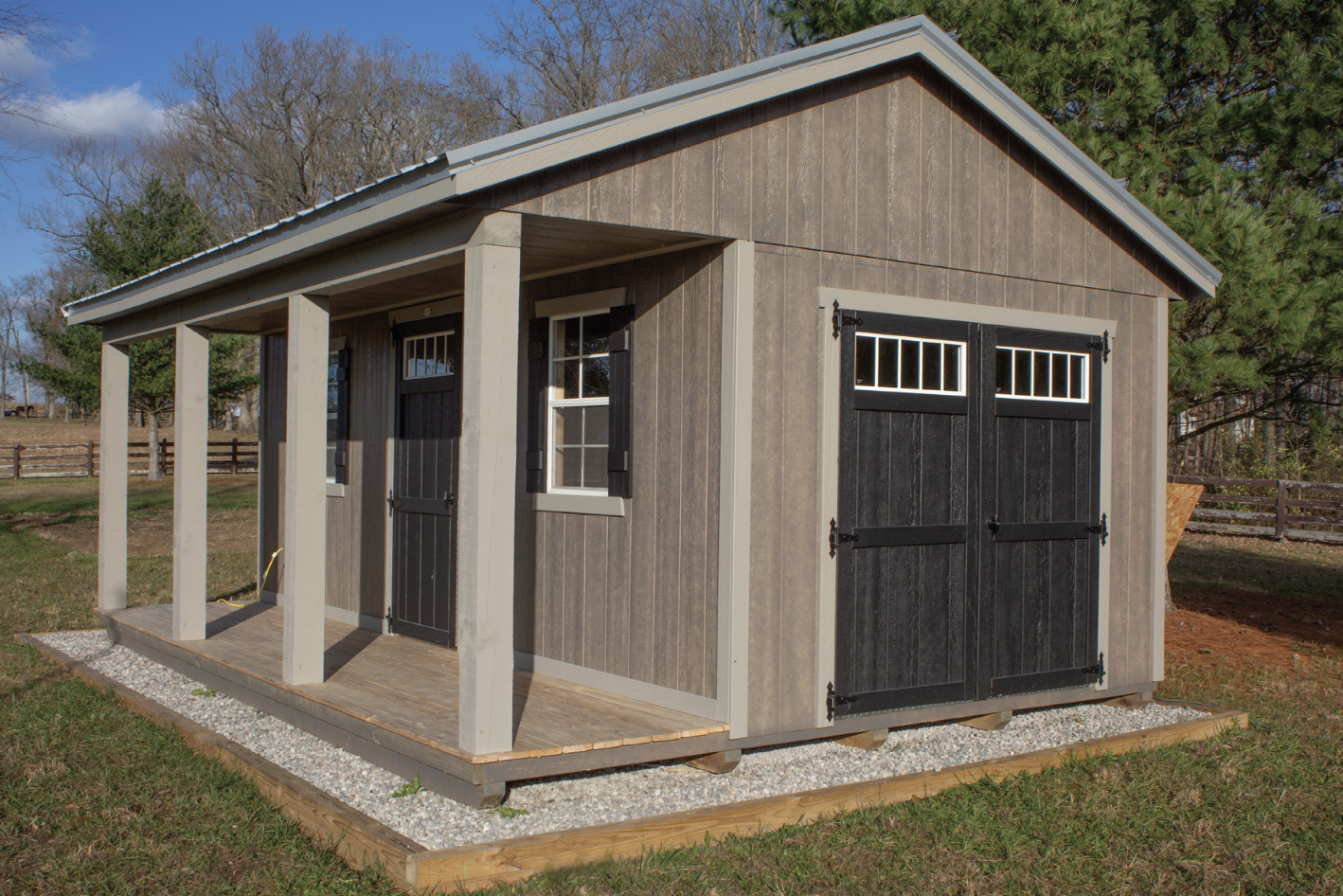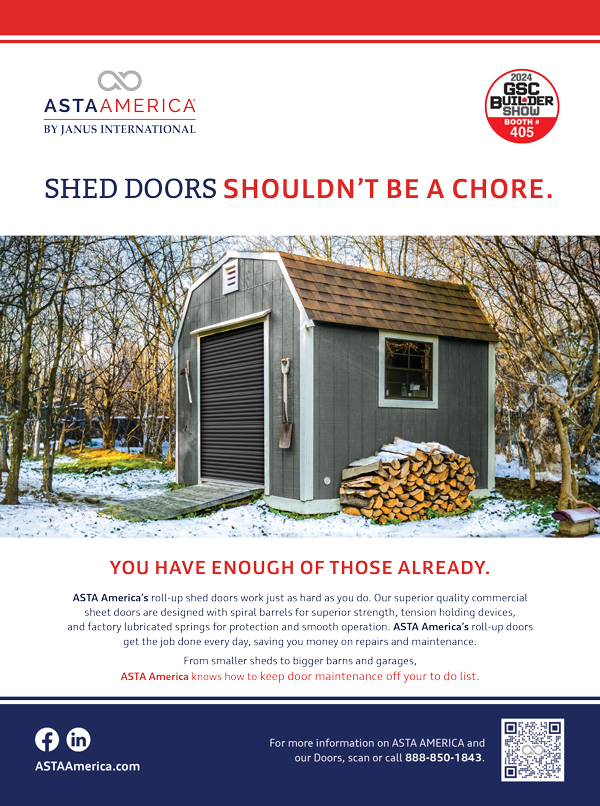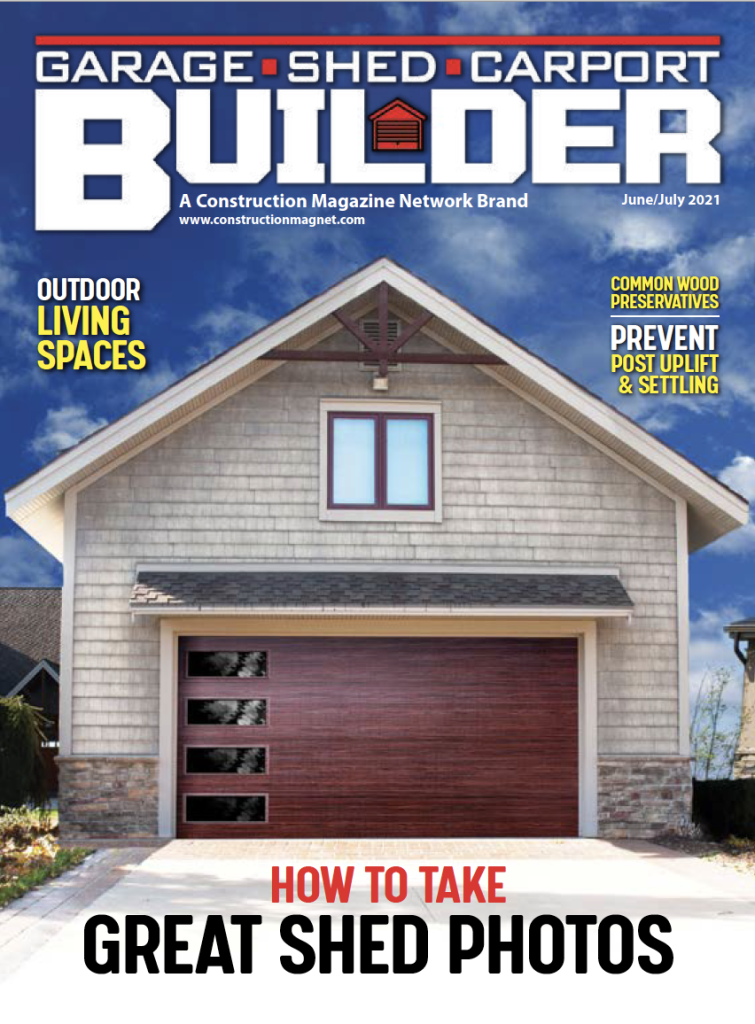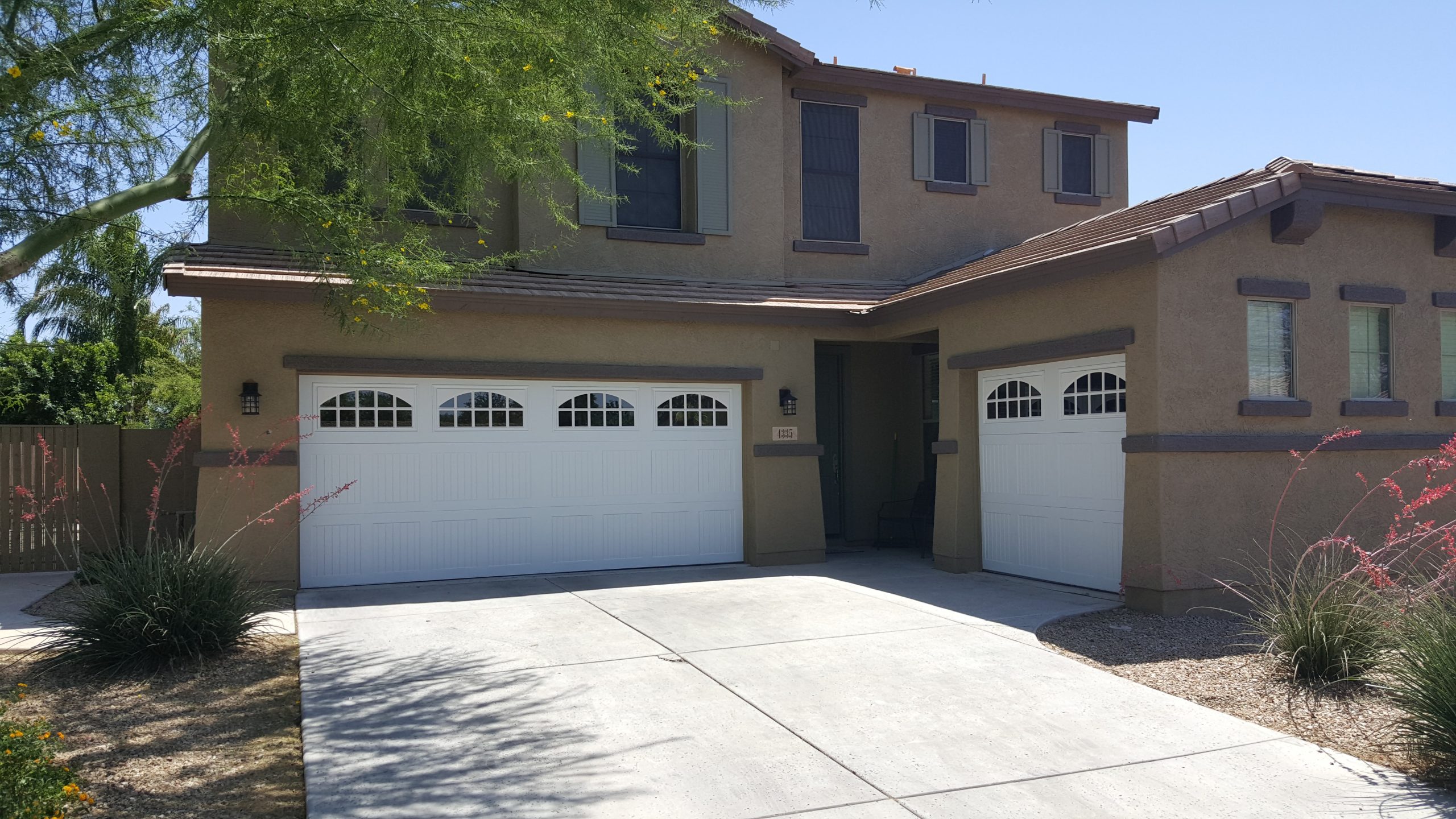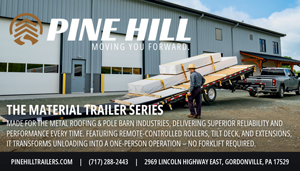By Jeff Huxmann, ShedHub
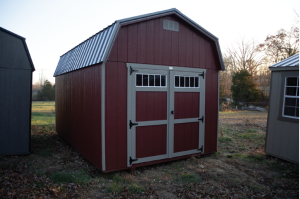
There are very few ugly sheds, but there are plenty of ugly photos of sheds. I take no pride in saying that I have taken plenty of these ugly photos, but I have learned from my mistakes (most of the time) and hope that you can save some valuable time with the tips below.
I have to make a confession of sorts. For a good chunk of my twenties I was a professional documentary nature filmmaker and worked on jobs for National Geographic and Animal Planet, among others. There are some similarities between photographing nature and photographing sheds, although it may not be obvious at first. It has to do with lighting.
Low-Angle Light Is Your Friend!
What do natural landscapes and buildings have in common? They both look best shortly after sunrise or shortly before sunset on a cloudless day. The low angle of the sun illuminates objects from the side, instead of from above. The low angle light creates stunning images with dramatic shadows.
Compare the shed photo above and the one at the right. If you were a shed shopper, which one would you rather buy? This same lighting works well on buildings larger than sheds. Houses, churches, skyscrapers, you name it. Buildings look great with low-angle lighting.
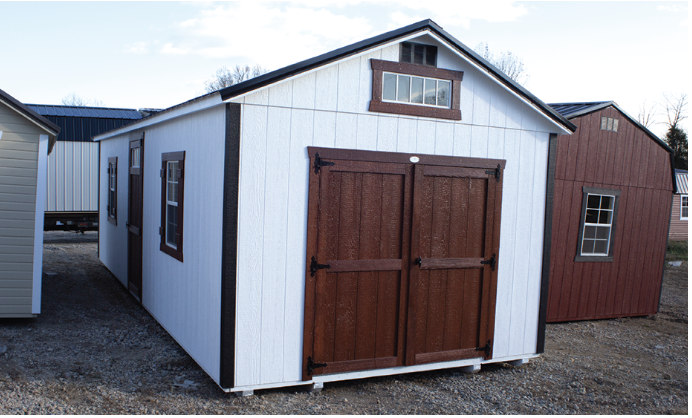
Avoid Back-Lit Sheds
I just told you that low angle light is a good thing, but there is an important caveat here. If the sun is in front of you, it will back-light your shed causing the shed to be too dark, or cause lens flare and streaks in your image.
You can adjust your exposure of the image to ensure the shed is properly exposed, but ideally the low light I speak of above is coming from behind you as you take the photo and nicely lighting up your shed.
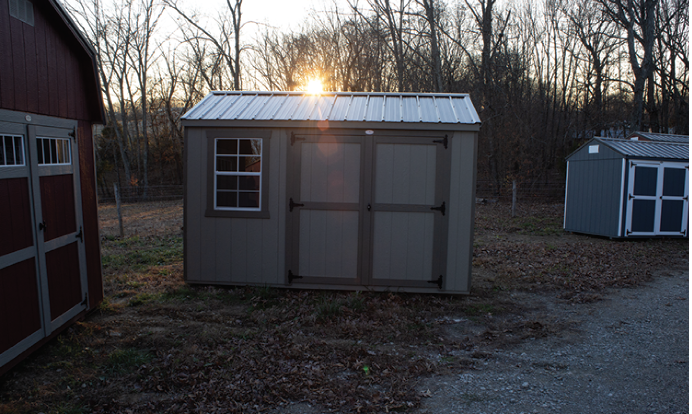
Take Many, Keep Few
Memory cards are cheap. Don’t be afraid to take many more photos than you will actually end up using and pick from the best of the best to share with others. I hate coming back from a photo shoot wondering if I should have gotten the building from a certain angle. Take photos at head height. Take photos from a squatting position to get a slightly more dramatic low angle of the shed. Sometimes I pull out a step ladder and snap photos of a shed from say about 9-10 feet up in the air and that creates a really nice perspective of a building that you don’t see often. Get photos of the same shed from a dozen or so angles and one of the photos is bound to look nice!
Fill the Frame
I see many shed photos in which a shed is maybe taking up 1/2 of the possible space available in the photo. That is fine in certain circumstances where you want to show off the surrounding landscape. For photos in which you are trying to sell a building sitting on a gravel or paved lot, the more you can fill the frame with the shed, the better. Filling the frame means that you will have a more detailed image of the shed and it will require less cropping later on, saving you a little bit of time editing the photo.
Show More With Corner Shots
Taking a photo of a shed directly from the front or the side is OK. For me that sort of shot has far less depth and visual appeal as a photo taken from about 45 degrees from the corner of a building.
This shot from this angle provides a good view of two sides of a shed and be sure to choose an angle that shows the main entrance to the shed, and another side with interesting features, like windows or more doors, instead of an empty wall. This type of photo make great primary photos when listing shed inventory.
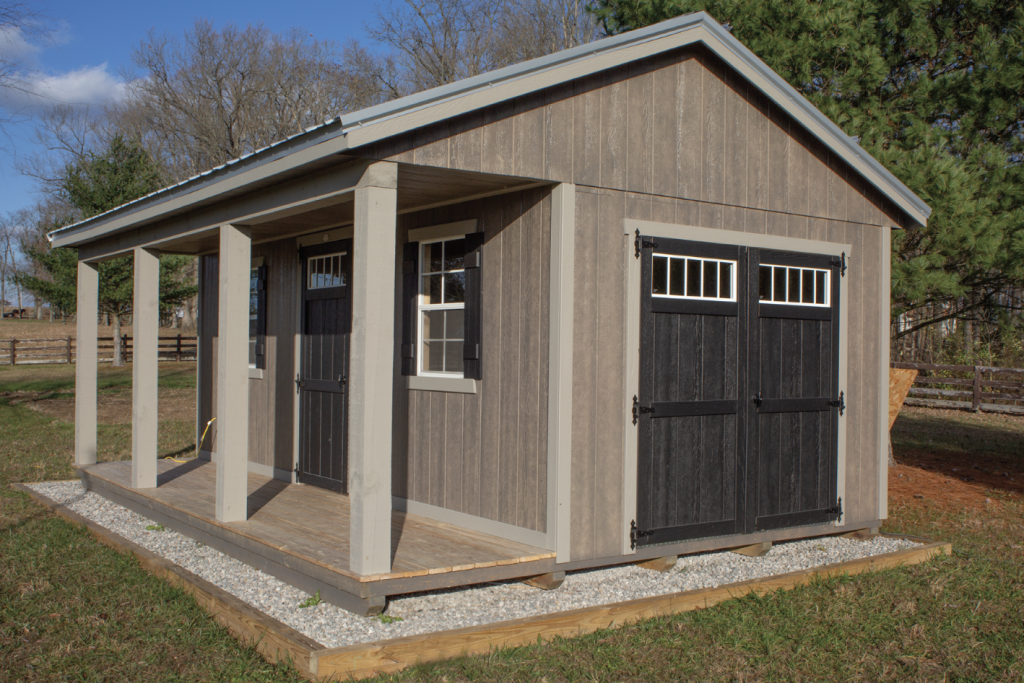
The Surroundings Set the Mood
Many of us have to work with the reality that portable sheds are stored at large gravel lots with not-so-interesting surroundings. Some of the best shed shots I’ve seen are of sheds nestled into woodlands or placed nicely on a tidy gravel pad with manicured lawn all around. These sort of photos are catalog cover worthy. The surroundings of a shed placed at it’s final destination always trumps sheds at sales lots. Your future customer seeing images of great scenery provides a sense of pride that your product will fit well on their property. Photos of sheds taken at gravel or paved lots is often where we are tasked to take images of portable building inventory. And that is OK, but if you have opportunities to get photos of your sheds after they have been delivered to a customer’s location, those can be some of the best photos because of the surroundings. Be sure to get permission with homeowners before publishing photos of sheds on customer’s private property.
People Tell a Story
Award winning photos capture a split second of time, but tell an entire story in that one frame. One area that we, the shed industry, could all do more of is photographic storytelling. This storytelling can be achieved by collecting photos of people interacting with and enjoying their new shed. People buy sheds to solve problems and to create experiences for themselves.
People buy sheds to store riding mowers or a new 4-wheeler, or create extra home office space. Images that capture real people enjoying having their problems solved creates an emotional response with a shed shopper that their space issues can be solved soon. Don’t underestimate the emotional buying habits of people. If a shopper sees something they can relate to and create a connection with in a photo they see, they are more likely to bond with that product.
Think about this: Why do cola ads show people taking a sip of a drink and then smiling for the camera? The not-so-subliminal message is cola equals happy people. Extra space solves problems for people – so make more of your photos about people being happy with your product. Be sure to get permission from all of the people in the photograph before publishing the photo. Signed talent releases from the people in your photos can help you and your company from a legal perspective when it comes to getting permission. I’m not qualified to hand out legal advice, but most lawyers should be able to dig up a template of a talent release and forward that on to you.

Don’t Forget Interior shots
Sheds look nicer from the outside simply because in our industry most of what we sell is unfinished on the inside. Studs and subfloor, coupled with low lighting, doesn’t make interior shots nearly as appealing as showing exterior shots. However Interior shots are important, especially if you are selling online, because a shopper wants a full picture of what they are getting. Some things I like to do when collecting interior shots is to take photos from all 4 corners of the interior rooms and keep the camera on the widest possible field of view. Sometimes I have to keep a door propped open to get enough light inside. You can bring a light kit with you to provide more interior lighting, but that can become time consuming.
Something I have started to dabble with is 360 degree interior photos taken with a specialized, but inexpensive 360 degree camera. It’s a bit harder to share these 360 degree images on your company website – it’s not a well embraced technology for web browsers, however these images can be uploaded into social sites and render nicely there, making for fun and interactive social media for your company’s products.
Camera Selection
While I do carry around a nice Canon SLR for taking high quality print catalog images, most new smartphones will do just fine for shed images. Often times the best camera is the one you have on you already. If you use a flip-phone camera, those photos do tend to be a little lower quality and not work for print catalogs, but would be sufficient for posting images for online inventory.

Keep It All In Perspective
I’ve given several tips here on how to improve photos of your sheds, but don’t think you have to employ all of these techniques to all of your images. (But if you did that would be amazing!) The more tips you can integrate, the better shed photographer you will become over time. And most of all be sure you are enjoying taking good photos! Ugly shots no more!
Jeff Huxmann is the founder of ShedHub, which provides marketing services for shed and accessory building companies and connects shed shoppers with shed sellers. Free ShedHub business listings and complimentary shed business growth assessments are available. More information: 415-915-7433.


